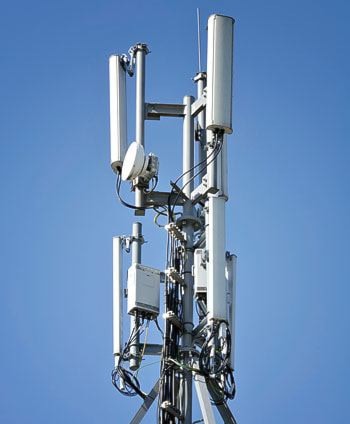If the failed push to block the installation of a new cellphone tower in Copper Ridge illustrates one thing, it’s that residents can be remarkably creative in rationalizing why something is a bad idea.
Let’s begin by acknowledging that cancer is a terrible affliction, to which many of us have lost loved ones. But that’s no reason to fear-monger and confuse or exaggerate the risks posed by mobile phones and cellular towers.
Here’s what we know: there’s a small body of evidence that suggests that prolonged, regular use of cellphones increases the risk of a rare type of brain tumour. Even with this heightened risk, the odds of developing such a tumour remains extremely low.
Dr. Joe Schwarcz, director of McGill University’s office of science and society, compares this risk to that of opening an umbrella during a storm. This heightens the risk of being hit by lightning. But nobody worries about this happening, “because the risk to start with is so infinitesimal, that even if you increase it by that many fold, you’re still dealing with a very small risk.”
Schwarcz advises that a far more serious health risk is spending a lot of time worrying about such things in the first place. Unlike radiation from cellphones, the detrimental health effects of such stress are demonstrably real.
Alternately, you could take the more cautious and sober advice offered by the World Health Organization, as recently echoed by the Yukon’s chief medical officer of health. If you use cellphones regularly and worry about the possible cancer risk, use a headset to keep the phone away from your brain.
As for the dangers posed by cellular towers, the British physician and science writer Ben Goldacre cheekily suggests that perhaps you should be pleased to live near such a structure.
You see, the signal emitted from a cellphone tower quickly dissipates as you move away from the mast. Any radiation you experience from a tower is nothing compared to your cellphone, which is a transmitter being pressed directly against your head.
But cellphones preserve their battery power by transmitting a weaker signal if a tower is nearby. “If you have a phone, it’s in your interest to have it transmit at the lowest power it can manage, which means a strong signal from the mast, which means the mast is on your street,” he concludes, while acknowledging that none of the foes of cellular towers are likely to heed his advice.
The World Health Organization, meanwhile, has looked at the risks posed by cellular tower emissions and concluded that “no adverse short- or long-term health effects have been shown to occur.”
With all of this in mind, some of the comparisons recently made between cellphone towers and DDT or cigarettes just seems irresponsible. Yes, the long-term risks of using cellphones is something that should continue to be studied. But what we currently know does not justify a big health scare.
Beyond fears of cancer, some opponents of cellular towers describe feeling ill near these towers. While we sympathize with anyone who feels sick, there is absolutely no credible evidence that so-called electromagnetic hypersensitivity is caused by the towers, as the WHO and other authorities have concluded.
Opponents of the Copper Ridge cellular tower also expressed concerns that the structure would lower nearby property values and be an eyesore. They described the tower as if it would be in residents’ front and back yards, when in fact, it will be set back 100 metres from any property, tucked in the middle of a forested lot. It’s far from clear why the top of a metal structure poking out among the nearby trees would be such a blight to property values and views.
Certainly, it would be nice if we didn’t need cellular towers. But they’re a price we need to pay for the luxury that is the widespread ownership of smartphones, and many of the Copper Ridge opponents themselves admit to carrying such phones.
These critics say they aren’t opposed to towers in principle - they just want them away from any residential areas. They proposed two sites that would meet this criteria. Bell’s engineer examined these locations and concluded they would create interference with other towers in Whitehorse, causing dropped calls and other problems.
At this point, we suppose who you believe depends in part on how much you dislike Canada’s giant telecommunications companies. We have no fondness for the exorbitant fees we pay to them every month, but it’s hard to see why Bell would lie about this. Surely the additional one-off costs of building towers in a different location would be worth appeasing upset residents - after all, the company agreed to do just that in Riverdale, moving a tower that was proposed to sit near the grocery store so that it was instead tucked into the woods nearby.
The opponents of the Copper Ridge cellular tower are right about one thing, however: the city ought to have a better communications policy in place so that residents are aware of future proposals to build cellphone towers. It seems some Copper Ridge residents were caught unaware until partway through the process.
It’s reassuring to hear such a policy is already in the works - however, by the time it’s complete, all of cellular towers needed for the foreseeable future in Whitehorse will already have been approved.
